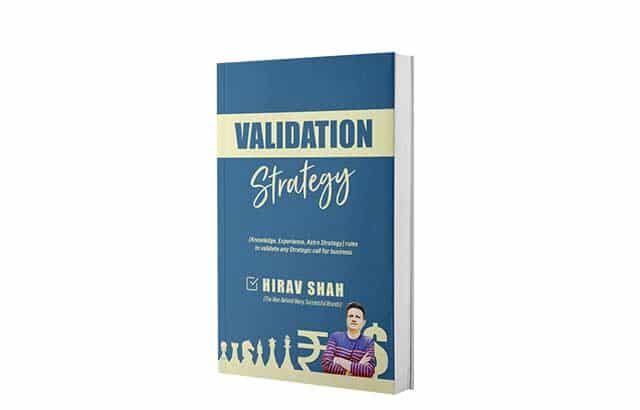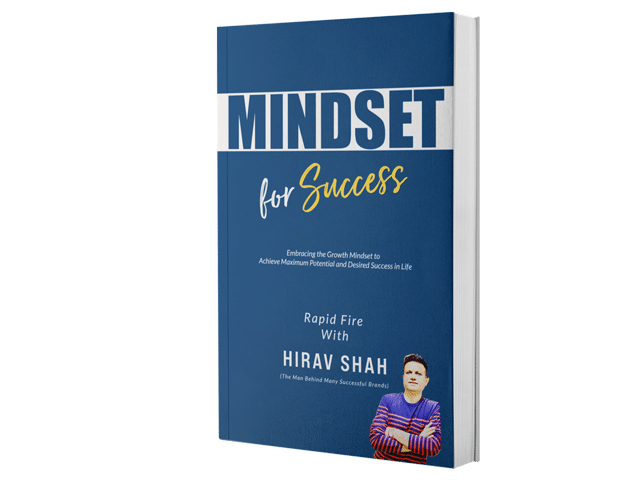Cultivating Self-Belief – Confidence and self-belief are the cornerstones of personal and professional success, driving individuals toward their goals with determination. Drawing inspiration from the insights of Hirav Shah, we will explore the essence of confidence, the significance of self-belief, and 11 empowering strategies to cultivate a strong belief in oneself.
Table of Contents
What is Confidence?

Confidence is the assuredness in one’s abilities, decisions, and actions. It serves as the fuel that propels individuals forward, enabling them to face challenges with resilience and optimism.
Cultivating Self-Belief- Example:
Imagine a student preparing for a major exam. Confidence allows them to approach their study sessions with a positive mindset, believing in their ability to master the material.
What is Self-Confidence?
Self-confidence is a personal level of assurance—it is the belief in one’s own capabilities and worth, independent of external validation.
Cultivating Self-Belief- Example:
A job candidate with self-confidence walks into an interview believing in their skills and experiences, which positively influences their performance.
Importance of Self-Confidence
Self-confidence is crucial for success. It shapes how individuals tackle challenges, take risks, and seize opportunities. A robust sense of self-confidence fosters resilience and positive self-esteem, empowering individuals to overcome obstacles.
Cultivating Self-Belief- Example:
A business owner facing market competition with self-confidence is more likely to innovate and adapt strategies, leading to growth and success.
What is Self-Belief?
Self-belief is a deep conviction in one’s potential and ability to achieve goals. While confidence may fluctuate based on external circumstances, self-belief serves as a steadfast inner compass.
Cultivating Self-Belief- Example:
An athlete may lose a competition but retains their self-belief, fueling their determination to train harder for the next event.
Difference Between Self-Belief and Self-Confidence
- Self-Confidence: External assurance in one’s abilities.
- Self-Belief: Internal conviction in one’s potential.
11 Powerful Ways to Cultivate Self-Belief

Inspired by Hirav Shah, here are 11 strategies to strengthen your belief in yourself, complete with examples and calculations to illustrate their impact.
1. Define Your Values
Align your goals with your core values to create a foundation for authentic self-belief.
Example: If creativity is a core value, pursue projects that allow creative expression.
Calculation: Reflect on your current goals and identify how many align with your values. Aim for at least 80% alignment for stronger self-belief.
2. Set Realistic Goals
Break your aspirations into manageable steps to build confidence through achievement.
Example: Instead of “Become a successful entrepreneur,” set steps like “Complete a business course in 6 months.”
Calculation: Set three specific goals per month. Achieving 2 out of 3 will boost confidence by 66%.
3. Embrace Failure as a Teacher
View failure as a lesson rather than a setback.
Example: If a business fails, analyze what went wrong and apply those lessons to future ventures.
Calculation: Track the lessons learned from each failure and aim to implement at least 3 lessons in your next project.
4. Cultivate a Positive Mindset
Focus on the positive aspects of situations to enhance self-confidence.
Example: After facing a challenge, list three things learned.
Calculation: Daily, write down 3 positives and review them weekly. Aim for at least 15 positives each month.
5. Visualize Success
Create a mental blueprint for your achievements through visualization.
Example: Before a presentation, visualize yourself confidently delivering your points.
Calculation: Spend 5 minutes daily visualizing success in various aspects of your life.
6. Surround Yourself with Positivity
Choose a supportive environment that nurtures your self-belief.
Example: Connect with mentors who encourage your goals.
Calculation: Assess your network monthly. Aim for 3 positive interactions per week to foster a supportive environment.
7. Continuously Learn and Grow
Commit to lifelong learning to reinforce self-belief.
Example: Enroll in a course relevant to your career.
Calculation: Set a goal to learn one new skill every quarter. This commitment translates to 4 new skills per year.
8. Accept Compliments Gracefully
Acknowledge compliments to internalize positive feedback.
Example: Respond to praise with “Thank you” instead of downplaying it.
Calculation: Track the number of compliments accepted each week. Aim for 3 per week to build internal validation.
9. Develop Resilience
Embrace challenges as opportunities to grow.
Example: View rejection as a temporary setback.
Calculation: For each rejection, list 2 things you learned. Aim to build resilience with at least 5 lessons per quarter.
10. Take Action Despite Fear
Acting in the face of fear reinforces self-belief.
Example: If afraid of public speaking, start by addressing small groups.
Calculation: Gradually increase your audience size by 20% each month, building confidence progressively.
11. Celebrate Small Wins
Recognize and celebrate achievements, no matter how small.
Example: Treat yourself after completing a project.
Calculation: Set a monthly reward for achieving 3 personal goals. This reinforces your belief in your capabilities.
Conclusion
By applying the insights of Hirav Shah and these 11 strategies, you can unlock your full potential and transform aspirations into reality. Understanding the nuances of confidence and self-belief, along with these practical steps, will lead to a journey of self-discovery and resilience. Embrace these practices, and may you find the courage to believe in yourself, unveiling limitless possibilities.
FAQs on Ways to Cultivate Self-Belief by Hirav Shah

Q: How can I boost my confidence quickly?
A: Engage in positive self-talk, set small, achievable goals, and celebrate your accomplishments, no matter how minor.
Q: What if I struggle with failure?
A: Reframe your perspective to see failure as a valuable learning opportunity. Analyze what went wrong and apply those lessons to future efforts.
Q: Can self-belief really be cultivated?
A: Absolutely! Self-belief can be strengthened through consistent practice of the strategies outlined above, leading to improved self-awareness and resilience.
Q: How do I know if I have low self-belief?
A: Signs include excessive self-doubt, avoidance of challenges, and relying heavily on external validation. Reflect on your thoughts and feelings to assess your self-belief.
Q: Is it possible to have self-confidence without self-belief?
A: Yes, self-confidence can be influenced by external factors, but true self-belief is a deeper, more stable foundation that persists regardless of external circumstances.










